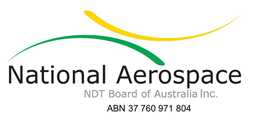The CASA Regulation CAR 42ZE states that maintenance on aircraft, including NDT, must be certified by a person either using an approved system of certification, and many maintenance organisations have certification systems approved by CASA; or certify in accordance with the CASA system of certification.
The person performing the NDT carries the responsibility for the inspection, and may certify for the conduct of the work and the veracity of the test results. However, the licensed aircraft maintenance engineer makes a final airworthiness certification of the maintenance, which will include due consideration of the results of any NDT.
An NDT technician approved by a person holding a CASA 42ZC (7) Instrument of Delegation, may certify for an NDT inspection, provided the inspection is within the scope of the approved person, and is done on behalf of the CAR 30 organisation which holds the Instrument. This situation is where an employer is authorised by CASA to approve its own NDT staff.
A person holding a valid Airworthiness Authority for NDT issued under part 33B of the Regulations may certify for an NDT inspection, provided the inspection is within the scope of the Authority, and he/she is working under an agreement with a CAR30 maintenance organisation.
A CASR Part 145 Approved Maintenance Organistation may authorise those employees to perform and certify for NDT who satisfy the authorisation requirements shown in the organisation’s Exposition.
